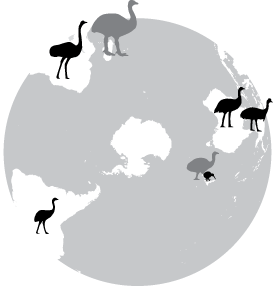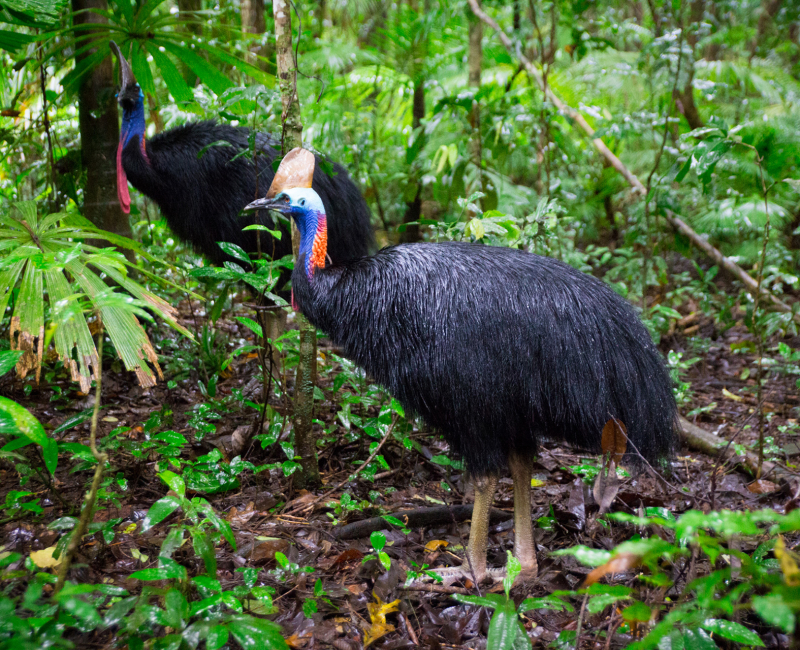Evolution
The Evolution of Cassowaries – Where did they come from?
For many people, the evolution of the cassowary is perplexing. The Southern Cassowary’s three-toed feet, amber eyes, casque, and brightly-coloured neck are evocative of a dinosaur. Southern Cassowaries belong to the taxonomic order Struthioniformes, commonly known as ‘ratites’.
Ratites – Dinosaur Birds
Ratites are (mostly) large-bodied birds that have adapted to a terrestrial way of life. Other ratites include the ostrich species, emu, New Zealand’s five kiwi species and the two rhea species of South America.
Ratites are morphologically different to other birds. They lack a keel bone, to which flight muscles attach. They also only have small vestigial wings. Ratites occur on all Southern continents except Antarctica, reflecting their Gondwanan heritage. They are ancient birds that began to evolve around 60 million years ago, during the Cretaceous period, when non-avian dinosaurs were the dominant animal life on Earth.
Biologists believe that the ratites share a common, flighted ancestor. The ratites may have lost their ability to fly more than once as they evolved and diversified. Flying is the most energy-expensive form of animal movement. Losing the ability to fly allowed the Cassowaries and their ratite relatives (with the exception of kiwis) to grow much larger than other birds. There are three species of Cassowary. The sub-species in Australia is known as Australian Southern Cassowary. Their closest relative is another Australian bird, the emu. These birds probably diverged from a common ancestor 25-30 million years ago.
Birds first appeared in the Jurassic period (about 150 million years ago). The extinction of terrestrial dinosaurs at the end of the Cretaceous period (65 million years ago) allowed birds and mammals to diversify and grow larger. They also took on many of the ecological roles left open by the extinct dinosaurs.
Where are they now?
Over the years humans have exploited ratites for meat, eggs and feathers. The two largest ratites have become extinct within recent centuries for these reasons: the moas of New Zealand and elephant birds of Madagascar. The picture below shows the evolution of the cassowary; the darkened ratites are currently distributed throughout the world and the extinct species are greyed out.

Scientists believe that modern birds evolved from a group of carnivorous dinosaurs known as ‘theropods’, which walked on two legs. These dinosaurs shared many features of modern birds: feathers, hollow bones, nesting, egg-brooding and care for their young.
Want to learn more about these incredible birds?
Who am I? The Endangered Southern Cassowary
Ecology & Habitat – The Rainforest Gardener
Indigenous Cultural Significance
Roles of Zoos and Captive Management


DONATE NOW
When you give generously, you become part of a committed team of individuals who collectively are helping to preserve some of the most biodiverse habitats and the species that live within them on this planet. Become a Rainforest Rescuer today!
purchase
and
protect
>>>
and
protect
>>>


